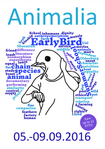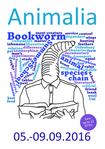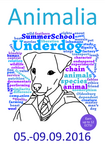Summer school Animal Studies
Summer school Animal Studies
Animalia: Interdisciplinary Perspectives and Explorations (05.-09.09.2016)
When Species Meet (Haraway 2007), Thinking with Animals (Daston/Mitman 2005), Eating Animals (Foer 2009), or Animals and Society (De Mello 2012) are some of the titles that fuel a debate currently carried out in academia, feuilletons, and lifestyle magazines: What is an ‘animal’? And what is the relationship between animals called ‘human’ and ‘non-human’? How (and by whom) are these groups produced as fundamentally different or as closely related? Various answers to this field of questions are provided by disciplines ranging from the Humanities to the Natural Sciences and prove the process of negotiating the dividing line between human and non-human animals to be highly dynamic and contested.
During the last 15 to 20 years, the labels Animal Studies or Human-Animal Studies have been used increasingly to denote an interdisciplinary, quickly growing field of research that focuses on these (and related) questions. Animal Studies scholars question the ‘naturalness’ and ‘thingness’ often attached to animals and, with a distinctly anti-essentialist perspective, focus on ‘the animal’ as a product of complex processes of construction that involve both human and non-human animals, are clearly structured according to categories of difference like race, gender, and class, and are historically and locally situated. Moreover, a critical perspective on agency leads scholars to interrogate traditional models of human-animal relations.
Biologically speaking, a mouse may be described as a mammal displaying complex social behavior. In historical representations, however, the mouse is typically depicted as a harbinger of sickness and death. Popular representations such as Disney’s Mickey Mouse or Tom & Jerry do rather little to improve the reputation of the small rodent, yet, the genetically manipulated and internationally patented OncoMouseTM acts in laboratory experiments to end (human) cancer (cf. Haraway 1997). Considering these semantic and normative implications and connotations attached to (the construction of) animals, it seems obvious that the relation between human and non-human animal is different between human and mouse or between human and chimpanzee or human and shark. Yet, whether the shark is described as a bloodthirsty aggressor or as an individual worthy of protection depends much more on the human and prevailing discourses as on the shark. An Animal Studies-informed perspective analyzes practices, actors, and representations of ‘the animal’ in the context of ethics, economy, ecology, culture, and biology, and links them with intersecting categories like race and gender.
The summer school “Animalia: Interdisciplinary Perspectives and Explorations” focuses on questions of human and non-human animal relations and aims at discussing notions of ‘the animal’ from various disciplinary perspectives.





